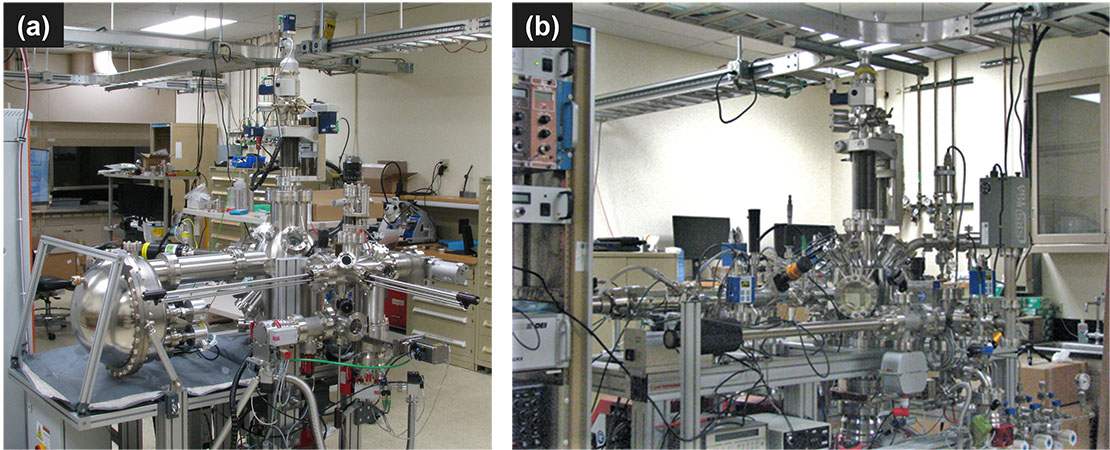Low-Energy Ion Beam Analysis
Category
Characterization Tools
Description
Detecting hydrogen is notoriously difficult for most surface analysis techniques. Chemisorbed hydrogen, for example, is invisible to x-ray photoelectron or Auger electron spectroscopies, and only subtly affects low energy electron diffraction patterns. Often changes in the substrate structure and composition overwhelm the comparatively smaller effect that hydrogen has on the detected signal.
Sandia has developed unique instrumentation for direct detection of hydrogen on surfaces with low energy ion scattering (LEIS) and direct recoil spectroscopy (DRS). In contrast to electron- and photon-based spectroscopies, element- and isotope-specific detection of hydrogen on surfaces is a unique strength of these low-energy ion beam techniques. Hydrogen is detected either by scattering low energy (typically < 3 keV) light ions (typically He+) from chemisorbed deuterium or using heavier ions (such as Ne+) to produce recoiled hydrogen. Both LEIS and DRS can be performed simultaneously to measure scattered and recoiled ion energies and are amenable to technical surfaces, such as pressed powders, and thin films. The samples must be compatible with the UHV environment of the chamber (i.e., materials that outgas made not be useable). Structural information (including the hydrogen binding configuration) can also be measured for ordered surfaces. LEIS offers high surface specificity (typically only the first two atomic layers are probed) due to the limited range of the ions within the material and neutralization effects.
Until recently, our primary instrument for detecting hydrogen on surfaces has been our angle-resolved ion energy spectrometer (ARIES) system, described in Ref. [1]. Within the last year, two new instruments have been developed as Sandia. These instruments are shown in Fig. 1. The first system is equipped with a 135 mm hemispherical analyzer and 2D microchannel plate detector. It includes several low energy ion sources for LEIS / DRS studies and high-resolution depth profiling. To complement LEIS / DRS analysis, the instrument is also equipped with an x-ray source for XPS studies. It is equipped with a 5-axis manipulator and allows for in-situ resistive heating of samples up to 800 °C, as well as cooling to -160 °C. A separate preparation chamber also allows for heating to 1800°C. A second instrument is designed for time-of-flight spectroscopy. It includes a 20 keV alkali ion source suitable for high-resolution depth profiling as well as a high-resolution 0-50 amu Extrel mass spectrometer for SIMS / thermal desorption measurements. In addition, the time-of-flight tubes are differentially pumped, allowing them to operate at elevated pressures (up to 1 mTorr).
Status
ARIES and XPS capabilities are on-line and available for use. Time-of-flight and thermal desorption instrumentation is expected to be fully online by the summer of 2023.
Figures

Two instruments at Sandia-Livermore for low energy ion scattering and XPS, and high-resolution depth profiling and thermal desorption spectroscopy.
References
- R. D. Kolasinski, J. A. Whaley, D. K. Ward, Surf. Sci. 677 (2018) 176.
- C. S. Wong, R. D. Kolasinski, J. A. Whaley, Surf. Sci. 729 (2023) 122229.
